9 Best RAM For Desktop PC
Working memory, also known as RAM memory, is a computer's short-term memory. Unlike the hard disk that stores data for a long time, the data in the main memory is only stored until the computer is turned off again. If the computer repeatedly reaches its limit with complex programs or several programs at once, then the problem is usually that the main memory is too small. So many Windows crashes because of it. If a memory test with the Windows Memory Diagnosis test tool reveals this, there's a good option: expanding working memory. Main memory can be expanded with the best RAM for desktop PC of the same construction or not, which is available from many well-known manufacturers.
The following memory comparison presents the 9 best RAM for desktop PCs and compares them in terms of factors such as performance, speed, and compatibility. The following guides go into detail about how RAM memory works, the different types of memory, and the proper installation of small blades. The FAQ section of the purchase advice provides competent answers to frequently asked questions related to RAM memory.
9 Best RAM For Desktop PC In A Huge Comparison
1. Memory Corsair Vengeance LPX CMK16GX4M2B3000C15
- DIMM Form Factor
- DDR4 . RAM memory technology
- Computer memory size 16 GB
- Memory speed 2666 MHz
The Corsair Vengeance LPX CMK16GX4M2B3000C15 RAM consists of two RAM sticks with a storage capacity of 8 gigabytes each (GB) and a clock frequency of 3,000 megahertz(MHz). Alternatively, main memory is available as a variant with one or four bars, 16 or 32 gigabytes (GB) of storage capacity and clock frequencies of 2,400, 3,200 or 3,600 megahertz. The best RAM memory for IntelX99, 100 and 200 series motherboards is optimized. The so-called "XMP 2.0" support is meant to ensure automatic and trouble-free transmissions. Installation should be very easy due to its flat design.
Fourth generation model: Corsair Vengeance LPX CMK16GX4M2B3000C15 memory is the fourth generation DDR module and has been in production since 2015 according to the manufacturer.
Each module of the Vengeance LPX series consists of an eight-layer PCB and a carefully tested memory IC. SPD latency is 15-15-15-36 for the current model. According to the manufacturer, the maximum operating temperature is 85 degrees Celsius. The unique design of the heat spreader is designed to optimally draw heat from the memory ICs to the system cooling path, making them more resilient. According to the manufacturer, the main memory has been tested for low power consumption and maximum compatibility.
How does working memory work? Unlike a hard disk, which stores data for a long time, data in main memory is only stored while the computer is turned on. RAM, also known as main memory, is a buffer for short-term data. It does not require large storage capacity, but fast transfer speeds. This guide provides further information after product comparison.
Advantages
- High clock frequency of 3,000 megahertz
- Available with four different clock frequencies (2,400, 3,000, 3,200 or 3,600 megahertz)
- Available in three sizes (8, 16 or 32 gigabytes)
- XMP 2.0 support for automatic and error-free data transfer
- Available in three colors (Black, White and Red)
Deficiency
- No disadvantages evident
2. Kingston HyperX HX316C10FWK2/8 Fury Memory
- DIMM form factor
- DDR3 . RAM memory technology
- Computer memory size 8 GB
- Memory speed 1600 MHz
Kingston HyperX HX316C10FWK2/8 Fury memory is offered in two sets and is conventional DDR3 RAM for desktop PC. The two memory sticks each have 4 gigabytes of storage space, their clock frequencies are in the range between 1,333 and 1,866 megahertz with a required connection voltage of 1.5 volts. Alternatively, RAM memory is also available as a single bar or with 4 or 16 gigabytes of storage space. There are four color themes to choose from: red, black, blue and white. Kingston states the maximum operating temperature is 85 degrees Celsius.
Ideal model for beginners: According to the manufacturer, the Kingston HyperX HX316C10FWK2/8 Fury best RAM is ideal for beginners. It should recognize the host platform via plug-and-play and automatically overclock it to a maximum clock rate of 1,866 megahertz (MHz).
According to the manufacturer, the asymmetrically designed heat sink ensures good heat dissipation and gives the RAM bars an attractive shape. HyperX Fury should be the right memory for Intel and AMD gamers. According to the manufacturer, it has been tested on all common motherboard brands to ensure that it works flawlessly everywhere. The stem from the ratio weighs 90 grams and measures 13.3 centimeters long x 3.28 centimeters high x 0.71 centimeters wide.
When does RAM need to be upgraded? If your own computer regularly reaches its limits in everyday tasks, it is time to upgrade the main memory. The indicator is the utilization of the RAM memory, which can be easily read out in the case of Windows. How PC owners should proceed is explained in the guide after the product descriptions.
Advantages
- Available in two sizes (4 or 16 gigabytes)
- Available with two different clock frequencies (1,333 or 1,866 megahertz)
- Available in four colors (Black, White, Blue and Red)
Deficiency
- DDR3 version
3. Memory CORSAIR VENGEANCE LPX CMK16GX4M2A2400C14
- DIMM form factor
- RAM DDR4 Memory Technology
- 16 GB computer memory size
- Memory speed 2666 MHz
The best RAM CORSAIR VENGEANCE LPX CMK16GX4M2A2400C14 is a modern DDR4 RAM memory, which in the model described here consists of two RAM modules with a storage capacity of 8 gigabytes each. Or, this model is available as a set of four or individually with a storage capacity of 4 or 16 gigabytes (GB). As a 8 gigabyte variant, main memory is available from the manufacturer as a set of eight. The model described here is set to 2,400 Megahertz (MHZ), or there are six different frequencies to be selected in the range from 2,400 to 3,600 Megahertz.
Memory Supports XMP 2.0: Memory Corsair Vengeance LPX CMK16GX4M2A2400C14 Supports the XMP 2.0 function, which is intended to allow automatic overclocking and problem free.
The main memory belonging to the fourth generation of DDR and was launched in 2015. According to the manufacturer, RAM memory is compatible with Intel X99, 100 and 200 and 200 motherboard. The manufacturer states a maximum temperature of 85 degrees. Because of the small form factor, the product must be suitable for smaller homes.
What type of memory is there? Producers distinguish between DDR, DDR2, DDR3 and DDR4 RAM. However, this is less about various types and more about the main memory version. The difference between generations does not only lies in the transmission speed but also on the available contacts, namely the connection option. The alternative is what is called So-Dimm memory for laptops and mini PCs.
Advantages
- Available in two clock frequencies (2,400 or 3,600 megahertz)
- Available in sets of 4 or 8
- Available in two sizes (4 or 16 gigabytes)
- XMP 2.0 support for automatic and error-free data transfer
Deficiency
- No disadvantages evident
4. Memory Crucial Ballistix Sport LT BLS4K8G4D240FSC
- DIMM form factor
- RAM DDR4 Memory Technology
- 32 GB computer memory size
- Memory speed 2400 MHz
Memory Crucial Ballistix Sport LT BLS4K8G4D240FSC is a fourth generation DDR model released in 2018. According to the manufacturer, this is suitable for users who want to run programs or several applications that are very demanding simultaneously. The model described here consists of four RAM sticks with a storage capacity of 8 gigabytes each. This is the clock at 2,400 Megahertz. Based on requests, RAM is available in many other types:
- Number of RAM Sticks: Single, Two-Pack, Four-Pack
- Storage Capacity: 4 Gigabytes, 8 Gigabytes, 16 Gigabytes As individual sticks, combinations to a maximum of 32 gigabyte
- Hours Frequency: 2,400 Megahertz, 2,666 Megahertz, 3,000 Megahertz
Unique camouflage display: Crucial Ballistix Sport Memory LT BLS4K8G4D240FSC is a digital heat spreader with a camouflage display and is available from manufacturers in white, gray and red designs. So he adapted optically to almost every mainboard.
With intelligence according to the manufacturer, the XMP 2.0 profile ensures the configuration is not complicated. The maximum operating temperature recommended by the manufacturer is 85 degrees Celsius. Because of a special design, cooling must be proven to be very effective. Main memory is especially compatible with Intel motherboard, because it has been optimized for the device. Since the latest generation, it has also been available for the AMD Ryzen processor. A stick measuring 13.34 cm x height 3.3 cm x width 0.56 cm. All construction weighs 172.37 grams.
What is a mainboard or motherboard? The mainboard, also known as the main circuit board or motherboard, is the central circuit board of a computer. The individual components such as processor sockets, slots for expansion cards or RAM memory slots are mounted on it. The conductor tracks required for this are divided into several tracks, called layers in the departments.
Advantages
- Available with three different clock frequencies (2,400, 2,666 or 3,000 megahertz)
- Available in sets of 2, 4 or 8
- Available in three sizes /4, 8 or 16 gigabytes)
- XMP 2.0 support for automatic and error-free data transfer
- Optimized for Intel mainboards
- Camouflage look
Deficiency
- No disadvantages evident
5. Memory CORSAIR VENGEANCE LPX CMK16GX4M2B3000C15R
- DIMM form factor
- RAM So-Rimm Memory Technology, DDR4
- 16 GB computer memory size
- 3000 MHz memory speed
The best RAM CORSAIR VENGEANCE LPX CMK16GX4M2B3000C15R consists of one set of two RAM modules with a storage capacity of 8 gigabytes each. The clock frequency is 3,000 Megahertz per bar (MHz). According to the manufacturer, the main memory allows the use of several applications simultaneously or very intensive programs computing without problems. This model is available based on requests either as a single variant, one set two, one set of four or one set eight with a capacity of 4, 8, 16 or 32 gigabyteteted. With regard to the maximum clock frequency, the manufacturer offers six levels between 2,400 and 4,600 Megahertz (MHZ).
Among other things for Intelx99 are optimized: Memory Corsair Vengeance LPX CMK16GX4M2B3000C15R owned by the DDR4 generation from 2018 and, according to the manufacturer, is optimized for the Intel X99, 100 and 200 and 200 Motherboard series.
Thanks to the support of XMP 2.0, overclocking without defects and automatically must be ascertained. The main memory operates with the Latency Memory CD15-17-17-35 and has 288 pins for connections to computer motherboards. According to the manufacturer, a 1.35 volt voltage is needed for the use of the correct device. The special design of the heat spreaders "Vengeance LPX" distributes the heat optimally from the Memorike IC Main memory cooling pathway. According to the manufacturer, the main memory has been tested several times for maximum compatibility.
What is XMP 2.0 support? "Extreme Memory Profile", abbreviated as XMP, is a certification for DDR memory modules introduced by US semiconductor manufacturer Intel. This certification is intended to facilitate the use of memory speeds and ensure stable operation. In addition, easier system overclocking is possible on supported memory chips. XMP 2.0 is simply an evolution of the XMP standard.
Advantages
- High clock frequency of 3,000 megahertz
- Available with five different clock frequencies (2,133, 2,400, 2,666, 3,000 or 3,200 megahertz)
- Available in sets of 2, 4 or 8
- Available in four sizes (4, 8, 16 or 32 gigabytes)
- XMP 2.0 support for automatic and error-free data transfer
- Optimized for Intel mainboards
- Available in four colors (Black, White, Blue and Red)
Deficiency
- No disadvantages evident
6. Crucial Memory Ballistix Tactical Tracer BLT4K16G4D30BET4
- DIMM Form Factor
- Computer memory size 64 GB
- Memory speed 3000 MHz
- Voltage 1.2 Volt
The Crucial Ballistix Tactical Tracer BLT4K16G4D30BET4 RAM in the variant described here is a four-pack with four sticks of RAM, each with 16 gigabytes of storage on offer - that's a total of 64 gigabytes. The clock is given by the manufacturer with 3,000 megahertzpada. Main memory must be suitable for Intel and Ryzen processors from AMD manufacturers. On request, the best RAM memory is available in various variants:
- Number of RAM Sticks: Single, Two-Pack, Four-Pack
- Storage capacity: 8 gigabytes and 16 gigabytes, in combination up to 64 gigabytes possible
- Clock frequency: 2,666 megahertz or 3,000 megahertz
With unique RGB lighting: the prismatic LEDs of the Crucial Ballistix Tactical Tracer memory BLT4K16G4D30BET4 allow RAM sticks to be illuminated individually. This function is compatible with ASUS Aura, MSI Mystic Light, Gigabyte AORUS Graphics Engine and other popular LED control programs.
Main memory is part of the fourth generation of DDR and was launched in 2018. Power consumption dropped by 1.2 volts relatively low. According to the manufacturer, the operating temperature of 85 degrees Celsius should not be exceeded in long-term operation. Memory compatibility has been optimized for Asus, MSI and Gigabyte products. Dimensions are 13.4 cm long x 4.1 cm high x 0.63 cm wide and weighs 45 grams.
What does the abbreviation RAM stand for? RAM is the abbreviation for "Random Access Memory" and is colloquially used as a synonym for the term main memory. RAM memory is used in all types of electronic devices and is primarily used as short-term storage for the system to access data quickly.
Advantages
- Available with two different clock frequencies (2,666 or 3,000 megahertz)
- Available in two sizes (8 and 16 gigabytes)
- Available as a set of 2 or 4
- Optimized for Asus, MSI and Gigabyte motherboards
- RGB lighting
Deficiency
- No disadvantages evident
7. Crucial CT25664BF160B Memory
- SO-DIMM Form Factor
- RAM memory technology DDR3L SDRAM
- Computer memory size 8 GB
- Memory speed 1600 MHz
According to the manufacturer, the CT102464BF160B Crucial best RAM is the so-called SO-DIMM memory to install in laptop, not in desktop PCs. The variant described here is a single stick of RAM with a storage capacity of 8 gigabytes and a clock frequency of 1,600 megahertz is offered. According to the manufacturer, a voltage of 1.35 volts is required for proper operationrequired. The manufacturer also recommends a permanent operating temperature of less than 85 degrees Celsius. If desired, modules can be purchased in sets of two and with 2, 4 or 16 gigabytes. An alternative clock frequency of 1,866 megahertz (MHz) is also available.
Paging function: Thanks to the paging function, your own system with the CT102464BF160B Crucial memory can access the hard drive faster. This should have a positive effect on the battery life of your laptop or mini PC.
Since there is usually very little space for hardware in laptop cases, the manufacturer has opted for a compact design with narrow dimensions measuring 7.3 centimeters long x 3.0 centimeters high x 0.2 centimeters wide and weighs 9.07 grams. According to the manufacturer, RAM is also compatible with OEM systems. It has a characteristic green color and is supplied without a heat spreader, i.e. an aluminum heat spreader.
What is an OEM system? OEM stands for Original Equipment Manifacturer. Original equipment manufacturers are manufacturers of products or components such as memory, but do not sell them themselves. For example, Microsoft sells much cheaper OEM versions of their software, such as Windows, to retailers who then ship them as a "bundle" with the newly purchased PC.
Advantages
- RAM for laptops
- Paging function for faster hard disk access
- Available with two different clock frequencies (1,600 or 1,866 megahertz)
- Available in three sizes (2, 4 and 16 gigabytes)
- Available as a set of 2
Deficiency
- Not suitable for desktop PCs
- Without heat spreader
8. Memory Corsair Vengeance Pro Series CMY16GX3M2A1600C9
- Desktop Form Factor
- DDR3 . RAM memory technology
- Computer memory size 16 GB
- Memory speed 1600 MHz
The Corsair Vengeance Pro Series CMY16GX3M2A1600C9 RAM consists of two sticks of RAM each with a storage capacity of 8 gigabytes and a clock frequency of 1,600 megahertz. Power consumption is 1.5 volts, the manufacturer specifies a maximum recommended operating temperature of 85 degrees Celsius. There is no other choice in terms of storage capacity, number of RAM modules or clock frequency. The main memory is equipped with the XMP 1.3 profile, which enables reliable automatic overclocking.
Third generation DDR memory: Corsair Vengeance Pro Series CMY16GX3M2A1600C9 memory is derived from the proven third generation DDR3 and has been on the market since 2013.
According to the manufacturer, the model can convince with a special design. The eight-layer circuit board is meant to ensure a high cooling effect and at the same time give the RAM stick a great look. The best RAM modules operate with a memory latency of CL9-9-9-24 and have 240 pins for connection to the motherboard. The memory is equipped with an aluminum heat spreader for more effective heat dissipation. Memories are available in red, black, blue or gold color themes.
What is storage latency? Storage latency is also known as "CL latency". The term is derived from the English term "Column Address Strobe Latency". This is the time it takes to deal with the columns in the computer's main memory. Its size is the number of clock cycles required, where the lower the value, the faster the RAM stick. In addition to CL, other information is often given for RAM sticks, which are also followed by a number - as seen above with main memory latency described: CL9-9-9-24.
Advantages
- Eight-layer circuit board and aluminum heat spreader for strong cooling effect
- XMP 1.3 support for easier overclocking
- Available in four colors (Black, Gold, Blue and Red)
Deficiency
- Only available with one clock frequency (1,600 megahertz)
- DDR3 version
9. An important memory Ballistix Elite BLE8G4D36BEEAK
- DIMM form factor
- DDR4 . RAM memory technology
- Computer memory size 8 GB
- Memory speed 3600 MHz
The Crucial Ballistix Elite BLE8G4D36BEEAK memory in the variant described is a single stick with a memory size of 8 gigabytes and a clock frequency of 3,600 megahertz. It is designed to meet the needs and requirements of gamers. The best RAM memory has a memory latency of CL15 and is available with the same latency as two sets, each with 8 gigabytes of memory or a clock frequency of 4,000 megahertz available. Other versions, even as a set of four totaling 32 gigabytes, are also available with CL18 memory latency.
Low latency and optimized for gamers: Crucial Ballistix Elite BLE8G4D36BEEAK memory is a modern DDR4 memory specially developed for gamers with low latency and optimized times.
According to the manufacturer, memory modules operate at faster speeds and responsiveness than standard DDR4 memory. The exclusive Balistix MOD utility and thermal sensor are designed to allow real-time temperature monitoring, and memory can be easily overclocked with the appropriate motherboard and BIOS. The memory is optimized for the latest Intel platforms, but according to the manufacturer, it is also suitable for AMD Ryzen processors.
What is AMD Ryzen? "Ryzen" is a processor architecture from the US manufacturer AMD, which was launched in 2017. It runs with four, six or eight CPU cores under the designation type 3, 5 and 7. AMD compares its Ryzen processors to the Intel Core i3, i5 or the famous i7. Ryzen processors usually provide more performance than Intel processors, but have low compatibility with many CPU components.
Advantages
- Ballistix MOD utility and thermal probe for real-time temperature monitoring and easier overclocking
- High clock frequency of 3,600 megahertz
- Available with two different clock frequencies (3,600 and 4,000 megahertz)
- Available as a set of 2 or 4
- Optimized for Intel mainboards
Deficiency
- No disadvantages evident
What is RAM?
The main processor or central processing unit CPU, short for "central processing unit", the computer is often referred to among specialists as the brain of the PC. Following this terminology, working memory serves as the short-term memory of the computer. As a component of the central processing unit, the best RAM is the part of the computer that the processor must always have access to during operation. All running processes are stored in it.
In other words, this means: the more RAM available, the more or more complex processes can run concurrently. In addition to the processor, the main memory greatly determines the overall performance and work speed of the computer. It plays an important role for gamers, for example, who run other programs like communication software and the like while playing computer games.
Main memory is often referred to as RAM memory in technical circles. The term RAM comes from English and stands for "Random Access Memory". How much RAM memory a PC user needs depends on their usage behavior. Office PCs for general office programs make up much less main memory requirements than gaming computers or PCs for trimming or editing audio and video files. In the first scenario, 4 gigabytes is usually enough out, 8 gigabytes of RAM is better. In the second case, it should be 16 gigabytes, 32 or even 64 gigabytes of RAM better if the 4K video is edited.
Not suitable for every operating system: Not every operating system, for example Windows, can use this much memory. There is a big dividing line between so-called 32- and 64-bit systems. More on that in the guide below.
Unlike regular hard drives, the best RAM memory only retains the data it contains until the computer shuts down. Main memory is also sometimes referred to as "volatile memory". It has transfer speeds up to 250 times faster than external or internal hard drives and is also known as "primary storage" or "fast storage". RAM memory should not be confused with hard drives as they don't have much in common with each other, even though they both store data.
In computers, the main memory is located on what is called the mainboard, also known as the motherboard or main circuit board. There are ready-made RAM slots available. How much memory can be installed on the computer depends on how many slots the internal mainboard has.
When should RAM be upgraded?
If your own computer repeatedly reaches its performance limit in daily use and causes errors or crashes, it is time to provide it with new RAM capacity. Many users wonder how to determine when memory usage is too high. It's relatively easy: Under Windows, the Task Manager can be invoked with the Ctrl + Alt + Del key combination. The usage of each hardware component can be seen under the "Performance" tab.
How do I see the RAM on an Apple computer? Mac memory usage can be checked by searching for Utilities and selecting the Memory tab in Activity Monitor.
However, a glance does not provide reliable data. To obtain meaningful results, the computer must be monitored daily for a period of one week in daily use. If usage is more than 80 or 90 percent daily, it makes sense to consider the best RAM upgrade. However, it should always be considered that the simultaneous use of different programs has a high impact on memory usage. A memory test with the Windows Memory Diagnosis test tool also makes sense to reveal the reason for the error. An alternative to memory diagnostics is the freeware MemTest. MemTest also checks memory for errors.
Important characteristics of RAM memory
Memory for PCs is sold in oblong RAM modules. They differ in terms of memory size, memory type and memory speed:
- Memory size: Most memory modules on the market are sold separately or are called memory kits. Kits are available in sizes from 4 to 8 gigabytes per cartridge. Older models from the early 2000s, if you can find them, are available in smaller sizes of 1 or 2 gigabytes. The rule of thumb is: the more RAM, the better.
- Storage types: Manufacturers are launching new generations of storage at rapid intervals, which are getting bigger, faster, and more energy efficient. However, computers are durable devices and cannot be reassembled indefinitely. Therefore, despite the state of the art, memory modules are often required which are actually considered outdated.
- Memory tempo: The memory tempo shows the clock frequency. This is the speed at which the CPU unit can access the RAM memory. Today's memory sticks reach clock frequencies of up to 3,000 megahertz, and sometimes peak values are even higher. The outdated alternatives that can still be found on the market are in the 800 to 2,400 megahertz range. Older models installed on PCs between 2000 and 2008 are sometimes much lower.
It should always be noted that certain generation models cannot be installed on computers whose mainboard was designed for the previous generation. Example: Common types of DDR3 RAM are not backward compatible. Therefore, the RAM to be installed must match the RAM module already installed in the PC. The FAQ section below explains how users can find out which memory module they have installed.
Interesting facts about the history of the origin of DDR main memory
The emergence of modern working memory began shortly before the turn of the millennium. Since mid-1999, well-known IT manufacturers have been trying to bring new RAM technologies to the market. However, those efforts quickly failed, causing manufacturers to focus more on DDR modules, which were already on the rise by then.
It wasn't until 2002 that buyers received the new technology with DDR modules. Since then, the performance has continued to improve - the success of modern DDR modules has been programmed. Over time, not only the requirements for storage capacity increase, but also for the clock frequency of each module. Increasingly complex systems and programs require consistent further development.
In the first few years, manufacturers can still meet the needs of users with subsequent developments. But that changed because of the great limitations of the technology used until now. Neither speed nor storage capacity can be increased anymore due to the technology used.
It's time to launch new standards and memory modules. This has been achieved with the DDR2 standard. It spreads to normal desktop and notebook PCs. With up to four individual modules and much higher clock frequencies, DDR2 main memory finds its way into many computers.
The next generation of working memory, DDR3 RAM, is still used in many PCs today. Due to the possibility of combining many modules with each other, high performance and large storage capacity can be achieved. In 2014, DDR4 memory finally hit the market. It quickly established itself through high-quality modules, constant further development of the clock frequency and high storage capacity.
Long guarantees on DDR4: Some manufacturers give guarantees of up to 10 years on DDR4 bars. In the event of a defect, users can rely on competent help as long as they keep the guarantee document safe. A copy of the invoice or receipt is recommended here.
What types of RAM are there?
There are the following types of memory:
- DDR4 RAM
- DDR3 RAM
- DDR2 RAM
- VERY DIMM
The abbreviation DDR in this context is sometimes misunderstood. It stands for "Double Data Rate" and has nothing to do with the former German Democratic Republic.
DDR4 RAM
DDR4 RAM memory is the latest version of RAM, which first appeared on the market in 2012, but only managed to establish itself firmly in 2014. A DDR4 RAM usually has 288 pins for connection to the mainboard for the desktop version and 260 pins for the laptop version. DDR4 RAM runs at 1.2 or 1.35 volts, which is lower than other models, which should allow for higher clock speeds and faster access to cached data.
Data processing speed is 12,800 to 25,600 megabytes per second and more. Memory sticks are available in 4, 8, 16, 32 and 64 gigabytes offered. DDR4 is also the first RAM version to work with a technology called chip stacking. This allows stacking of up to eight storage layers to achieve higher storage capacity and better signal strength.
Advantages
- Chip stacking technique
- Powerful and energy efficient
- Improved storage capacity and signal quality
Deficiency
- Most expensive to buy
DDR3 RAM
DDR3 RAM is the direct successor to DDR2 memory and is still used in many computers today. A transmission rate of 6,400 to 19,200 megabytes per second is achieved. The number of contacts is 240 for desktop PCs and 204 for laptops. DDR3 modules are attractive for many gaming and multimedia applications because of their low cost. They are usually offered in the form of 4, 8 or 16 gigabyte bars.
Advantages
- Significantly faster than DDR2 RAM
- Usable for mobile devices
- Lower voltage consumption than DDR2
- Compatible with most motherboards
Deficiency
- Slower than DDR4
- Less future-oriented than DDR4 RAM
- More expensive to buy than DDR2
DDR2 RAM
DDR2 RAM came to the market in 2005 as a successor to conventional DDR working memory. Like DDR3 RAM, it has 240 contacts to connect to the mainboard, but is not compatible with newer versions of RAM. The transmission rate is between 3,200 and 8,500 megabytes per second. DDR2 RAM is typically offered in 2, 4 and 8 gigabyte modules, but is rarely found on the market today.
Advantages
- Very inexpensive
Deficiency
- Comparatively low performance
- Hard to find
- Low compatibility with end devices
VERY DIMM
All RAM modules for conventional desktop PCs follow the DIMM architecture. SO-DIMM stands for "Small Outline Dual Inline Memory Module" and describes a main memory technology specifically developed for notebooks and laptops. It is a subcategory of its own, offered as DDR2, DDR3, and DDR4 memory. The difference with regular RAM sticks lies in the much smaller size of the modules, as they have to fit into a narrow laptop case.
Advantages
- Suitable for notebooks and laptops
Deficiency
- Not compatible with desktop PCs
- Not suitable for all laptops
- Limited availability and low supply
Important purchasing criteria for RAM
There are several things to consider when buying new memory. This includes:
- Design: First, you have to make sure that the new memory fits into the computer. You should pay attention to the design which is divided into DIMMs and SO-DIMMs. Memory modules with DIMM designs are suitable for regular desktop PC mainboards, while more compact SO-DIMM modules are intended for mini PCs mainboards and laptops. You should also pay attention to the number of contacts available, because there is a difference between DDR3 and DDR4 RAM. The computer or mainboard manual contains precise information about which RAM modules are compatible.
- RAM type: There are almost no DDR2 modules on the market today, so only DDR3 RAM and DDR4 RAM can be used. The DDR3 version works a little slower, but is cheap. If you want to get the most out of your computer, you should spend more money and invest in DDR4 RAM. The type of slots available on the mainboard is also important, because DDR3 RAM cannot be used in DDR4 slots.
- Storage capacity: How high the storage capacity of a new RAM module should be depends on personal usage behavior. Computing-intensive computer programs or games require significantly more RAM than typical office applications. Most users come with 8 to 16 gigabytes of storage capacity easily. Most computers cannot use more than 32 or 64 gigabytes.
- Memory latency: Memory latency is the number of times memory sends data to the processor per clock cycle. This value is often specified by the manufacturer as CL or "Column Strobe Latency". The following applies: the lower the memory latency, the faster the memory responds. Therefore, memory that works with CL5 is slower than RAM memory that works with CL2.
- Number of RAM modules: Most motherboards have four slots for RAM modules. But there are also computers with more or fewer slots. A look at the manual for the mainboard should answer all the questions. It makes sense to buy all memory sticks from the same manufacturer. This minimizes the risk of technical difficulties. Anyone who decides to use modules from different manufacturers should remember that computers always adapt to the slowest hardware.
- Clock frequency: The clock frequency of the RAM memory determines the access time at which stored data can be transferred. Values are given in mega transfers per second, or MT/s for short. Most manufacturers often use the megahertz to indicate speed. It is important that the clock frequency of the main memory matches the working speed of the processor. The appropriate table can usually be found in the manual for the processor or computer.
- Dimensions: Before buying, the inventor should get a general idea of how much space is available in the computer case. Otherwise, there is a risk that the main memory has the correct connections but is too large to fit into the PC. This aspect mainly plays a role in laptops and notebooks, less often on desktop PCs.
- Voltage: The mains voltage in volts used by main memory plays a role when it is overclocked. Voltage and clock speed are closely related and should always be well matched. The correct relationship between the two values is usually set automatically by the mainboard via the SPD-ROM chip. However, the value can also be reset manually via the PC BIOS.
How is RAM memory installed correctly?
Contrary to most expectations, installing a new RAM stick is not rocket science. However, do-it-yourselfers should pay attention to a few things when installing:
- In the first step, the computer must be turned off, disconnected from the power supply, and grounded to the radiator, for example.
- The computer is then opened to get an overview. It is important to find a slot for the main memory on the mainboard.
- If necessary, the old RAM modules are now removed by loosening the small safety levers at the ends of each rail and then gently pulling the main memory out.
- Now the new RAM is carefully inserted, paying attention to the click of the safety lever. Just after a click, the new RAM has contact with the motherboard or mainboard and is properly installed.
- The computer should then be restarted and the task manager or computer management should be checked to see if the correct storage capacity of the new main memory is displayed.
- If everything is as it should be, the computer is finally shut down again, disconnected from the power supply, grounded, and then plugged back in properly.
Overview of leading manufacturers and brands
As with almost all products, there are also several RAM manufacturers who are able to establish themselves as market leaders.
- Corsair: The US company Corsair, founded in 1994, specializes in high-performance memory modules that are especially popular with gamers. The manufacturer now also sells main memory in a lower price range under the product name "ValueSelect". The company is based in Fremont, California, and went public on the US technology exchange NASDAQ in September 2020.
- Kingston: "Kingston Technology" is an American memory product manufacturer headquartered in Fountain Valley, California. Founded in 1987, this company sells a wide range of computer hardware at relatively low prices. The first European branch opened in 1995 in the Bavarian capital, Munich. In 2017, the company recorded sales of more than 10 billion US dollars for the first time. Many other branches followed. Today, Kingston Technology, under its HyperX brand, is one of the world's leading independent memory manufacturers.
- Crucial: The semiconductor company now known as Crucial was founded in 1978 under the name "Micron Technology" and is still part of the American technology company based in Boise, Idaho. According to the manufacturer, it means knowledge, compatibility and reliability. Crucial offers a wide variety of memory modules that have something for gamers as well as for the occasional computer user. According to Micron Technology, it employs more than 30,000 people and generates annual sales of more than 30 billion US dollars.
Frequently asked questions about RAM
Which is the best RAM memory?
It depends on the requirements. For example, a gamer is more likely to look for higher quality than a home office worker looking for a little more storage for their laptop. Therefore, it is important to know your own needs before buying the best RAM memory. You can then see a comparison of these products and crown the winner of the personal test.
Where can you buy RAM?
The best RAM can be purchased at a local electronics store or online from an online retailer. Anyone with little experience with RAM memory and other PC components can find helpful personal buying advice from trained local shop staff. Otherwise, online retailers have more advantages. They offer a large number of products to compare and access to hundreds of reviews and testimonials from other customers.
How much does RAM cost?
It all depends on the size and speed of the RAM memory. The bigger the RAM stick, the higher the price. One 4 gigabyte module is usually cheaper than two 2 gigabyte modules each.
4 gigabytes of DDR3 RAM are usually between 70 and $100. While there are big outliers up or down, most providers are somewhere within the stated price range. DDR4 RAM sticks are even more expensive than DDR3 modules.
Which is more important: big or fast RAM memory?
The two are difficult to separate. Higher clock frequencies are always desirable, as RAM memory is responsible for the data that the computer needs to access temporarily. The bigger the RAM memory, the more the system can swap it out. However, all the storage capacity in the world is useless if the transfer speed or RAM access speed is slow and swapping slows down.
The assumption that a memory stick with a capacity of 16 gigabytes can clock slower than a smaller module is wrong. Therefore, a good balance between speed and size should always be sought. Existing system and your own wallet that determines how fast and how much RAM memory.
Where is the information about the computer's RAM?
As already mentioned in the guide, many users have no idea what RAM they have on their computer. The oldest trick in the world is to simply open the computer - we explained how it works above and take a look at the memory stick itself. There is usually noted the type of memory and how big and fast. This variant is recommended if the computer is not in a factory or used condition.
How much RAM does the game need?
This depends on the type of game and the resolution and level of detail being played. Therefore, a general answer is difficult. There are now 8 or 16 gigabytes the absolute standard in gaming PCs. If you have high demands on graphics, you should spend more money and invest in 16 gigabytes of RAM. Until recently, 32 gigabytes were rarely needed - experts debated whether 32 gigabytes really brought any added value to gaming.
When in doubt, more RAM is never bad - especially for gamers using up-to-date and powerful graphics cards that don't slow down RAM memory. Because games, like any technology, evolve rapidly with the demands of hardware.
What is meant by dual channel?
In principle, a computer can only access one RAM module at a time. With the so-called dual channel function, it is possible to use the best two sticks of RAM at the same time. To do this, at least two RAM modules must be plugged into the same colored slots on the mainboard. Ideally, the sticks are all from the same manufacturer and follow the same model.
How is memory cleared?
The cooperation between the CPU, memory and the operating system is usually so good that the user does not need to intervene. In fact the opposite can happen. Cleaning RAM manually too often can cause crashes or decreased performance. So if the main memory is always full, it is recommended to add the best RAM instead of interrupting the automatic process.
If you still want to free up RAM more often for some reason, we recommend using a RAM optimization program. They are available for Windows and macOS. Another solution is to restart the PC which will close all applications. It also clears memory. After shutdown, redundant stored files will be deleted and only running programs get new resources.
Conclusion
DDR4 RAM is indispensable for modern computer systems. The quality is very qualified to run heavy and complex programs. Even though it is sophisticated, it still requires precision in choosing it so that the costs incurred are balanced and not wasteful.
The capacities of 4 GB, 8 GB, and 16 GB have their respective advantages. Make sure you choose the best RAM for your desktop PC according to your needs and compatible with your motherboard, OK!


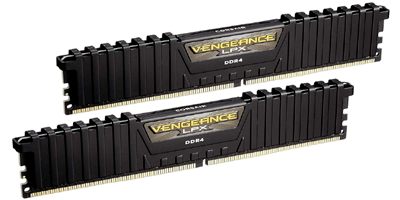
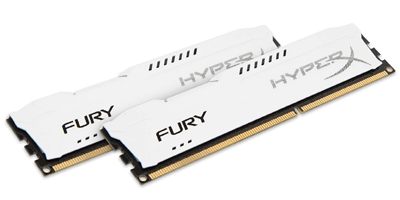
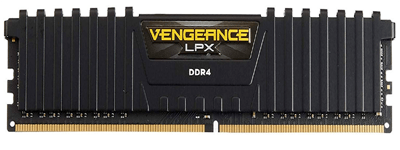
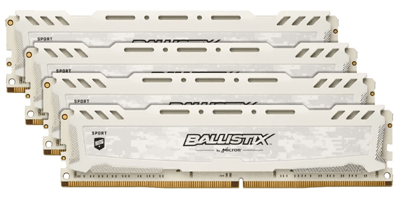

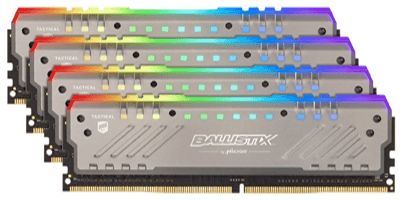
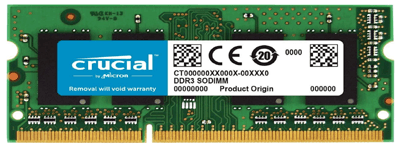

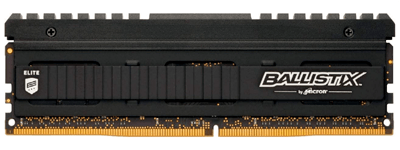

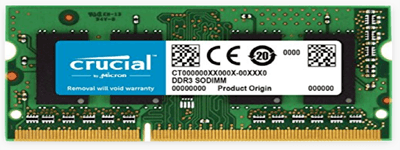

Post a Comment for "9 Best RAM For Desktop PC"